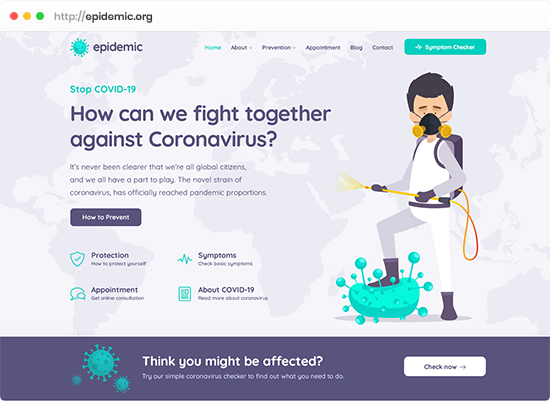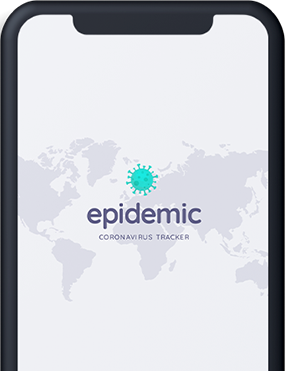Some details about how the disease is spread are unknown and is being determined.The WHO and CDC state that it is primarily spread during close contact and by respiratory droplets produced when people cough or sneeze; with close contact being within 1 to 2 meters (3 to 6 feet). A study in Singapore found that an uncovered coughing can lead to droplets travelling up to 4.5 metres (15 feet).
Respiratory droplets may also be produced during breathing out, including when talking, though the virus is not generally airborne. These droplets can land in the mouths or noses of people who are nearby or possibly be inhaled into the lungs.Some medical procedures such as intubation and cardiopulmonary resuscitation (CPR) may cause respiratory secretions to be aerosolized and thus result in airborne spread. It may also spread when one touches a contaminated surface and then touches their eyes, nose, or mouth.

Protection
How to protect yourself
Appointment
Get online consultation
Symptoms
Check basic symptoms
About COVID-19
Read more about
Pandemic of Coronavirus Disease 2019
The 2019–20 coronavirus pandemic is an ongoing pandemic of coronavirus disease 2019 (COVID-19), caused by severe acute respiratory syndrome coronavirus 2 (SARS-CoV-2). The outbreak was first identified in Wuhan, Hubei, China, in December 2019. The World Health Organization (WHO) declared the outbreak to be a Public Health Emergency of International Concern on 30 January 2020 and recognized it as a pandemic on 11 March.
What are Coronavirus?
What is the COVID-19 virus?
COVID-19 is a new strain of coronavirus that has not been previously identified in humans. It was first identified in Wuhan, Hubei Province, China, where it has caused a large and ongoing outbreak. It has since spread more widely in China. Cases have since been identified in several other countries. The COVID-19 virus is closely related to a bat coronavirus.
Virology
Viral testing
Severe acute respiratory syndrome coronavirus 2 (SARS-CoV-2) is a novel severe acute respiratory syndrome coronavirus, first isolated from three people with pneumonia connected to the cluster of acute respiratory illness cases in Wuhan. All features of the novel SARS-CoV-2 virus occur in related coronaviruses in nature.
What is the COVID-19 virus?
COVID-19 is a new strain of coronavirus that has not been previously identified in humans. It was first identified in Wuhan, Hubei Province, China, where it has caused a large and ongoing outbreak. It has since spread more widely in China. Cases have since been identified in several other countries. The COVID-19 virus is closely related to a bat coronavirus.
SARS-CoV-2 is closely related to the SARS-CoV. It is thought to have a zoonotic origin. Genetic analysis has revealed that the coronavirus genetically clusters with the genus Betacoronavirus, in subgenus Sarbecovirus (lineage B) together with two bat-derived strains. It is 96% identical at the whole genome level to other bat coronavirus samples (BatCov RaTG13). In February 2020, Chinese researchers found that there is only one amino acid difference in certain parts of the genome sequences between the viruses from pangolins and those from humans, however, whole-genome comparison to date found at most 92% of genetic material shared between pangolin coronavirus and SARS-CoV-2, which is insufficient to prove pangolins to be the intermediate host.






